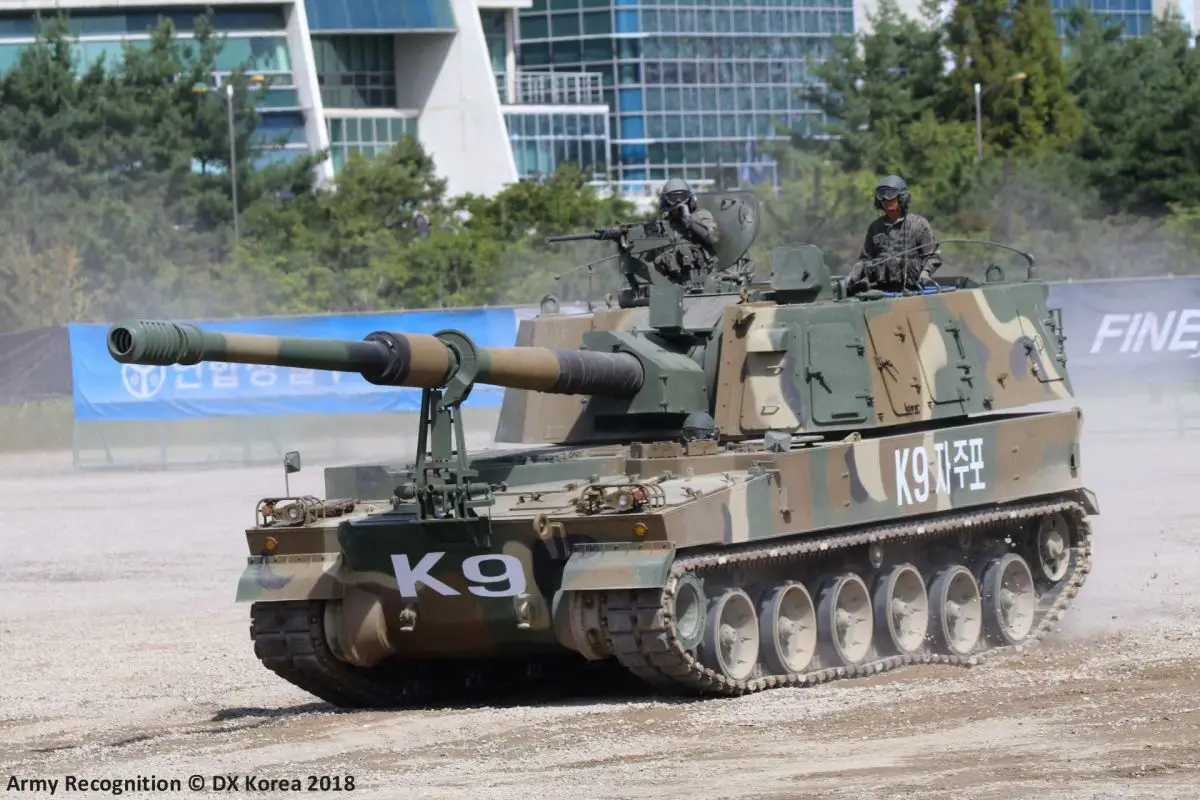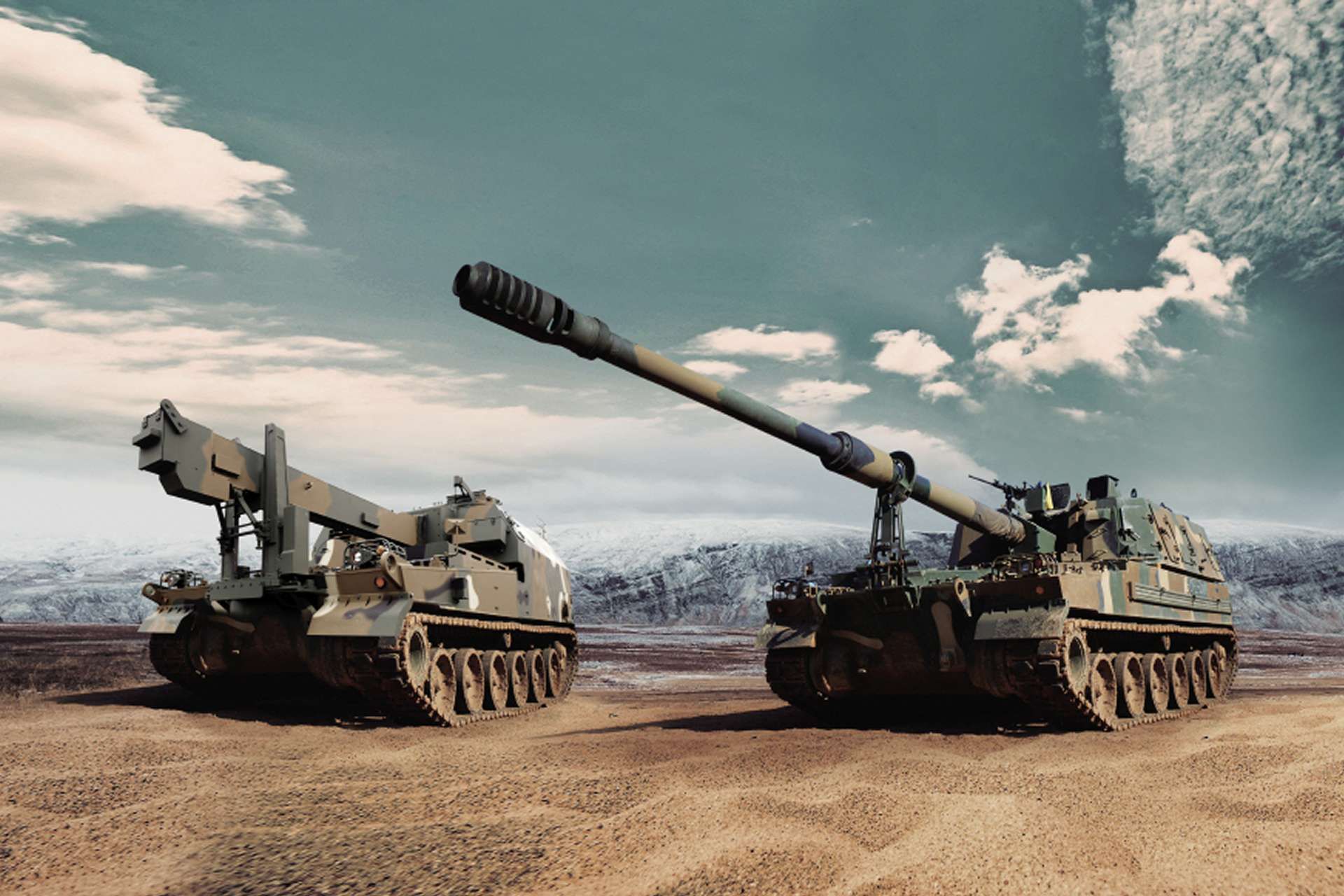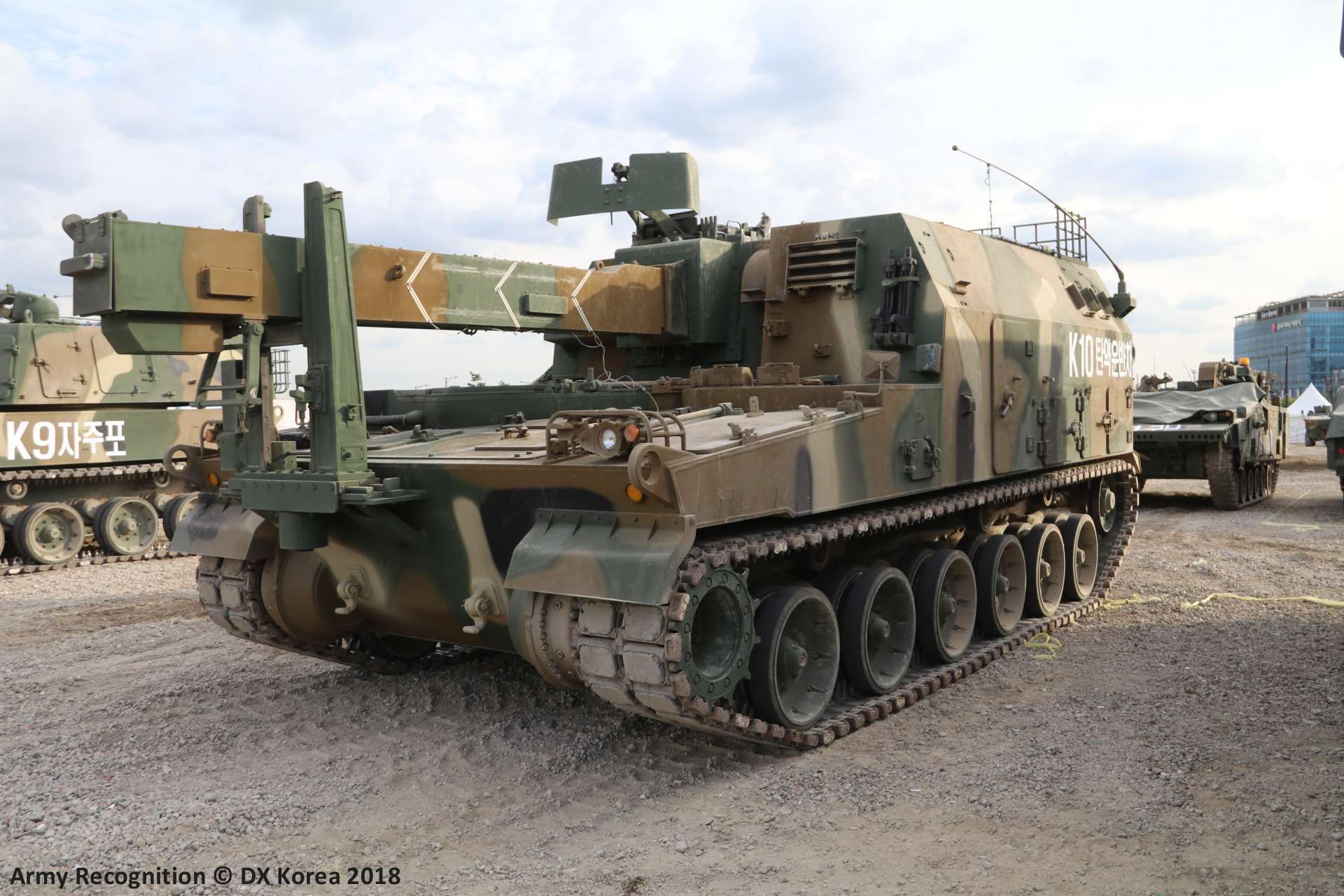Breaking News
Romania becomes 10th country to purchase the South Korean K9 Thunder howitzer in $1 Billion Deal.
On July 9, 2024, the South Korean company Hanwha Aerospace signed a contract with the Romanian Ministry of National Defence valued at approximately 1.4 trillion won ($1,011,319,540). The contract includes 54 K9 self-propelled howitzers, 36 K10 ammunition resupply vehicles, ammunition, and various support vehicles, both tracked and wheeled. This agreement makes Romania the 10th country to purchase the K9 self-propelled howitzer, indicating its widespread use and reliability.
Follow Army Recognition on Google News at this link

This agreement makes Romania the 10th member of the K9 User Club and the sixth NATO nation to use the 155mm tracked self-propelled howitzer, joining Türkiye, Poland, Norway, Finland, and Estonia. (Picture source: Army Recognition)
Diplomatic exchanges between South Korea and Romania have been frequent since the beginning of 2024, with three visits by the Romanian Minister of Defense to South Korea. A key event occurred on May 5th, 2024, when the South Korean Minister of Defense visited Romania, facilitating the strategic discussions that supported the signing of this export contract. This agreement makes Romania the 10th member of the K9 User Club and the sixth NATO nation to use the 155mm tracked self-propelled howitzer, joining Türkiye, Poland, Norway, Finland, and Estonia. Romania also becomes the third global operator of the K10, after Norway and Australia, enhancing its artillery efficiency with automated resupply capabilities.
Hanwha Aerospace has also proposed the Redback Infantry Fighting Vehicle (IFV) to support Romania’s armored vehicle modernization efforts. The Redback shares significant commonality with the K9 in terms of powertrain and chassis, potentially streamlining operations, production, and maintenance for Romania. This proposal aims to meet the Romanian Army’s needs in response to emerging threats and evolving battlefield environments.
The K9 Thunder, which holds over 50 percent of the global self-propelled howitzer market, will be largely manufactured and repaired locally in Romania. This approach involves significant participation from local suppliers to maximize economic and industrial benefits within Romania. Hanwha Aerospace's strategy includes local production of defense equipment, creating local employment opportunities, technology transfer, and establishing a Center of Excellence for maintenance, repair, and overhaul (MRO) operations in a new facility in Romania.

The contract includes 54 K9 self-propelled howitzers, 36 K10 ammunition resupply vehicles, ammunition, and various support vehicles, both tracked and wheeled. (Picture source: Hanwha Aerospace)
Hanwha Aerospace President and CEO Jaeil Son commented on the significance of the deal, noting the inclusion of artillery vehicles, support vehicles, and ammunition. The delivery of these systems is planned over the next five years, with the first batch expected by early 2027. Peter Bae, Vice President of Hanwha Aerospace Europe, highlighted the potential benefits to the Romanian defense industry through localization programs, aiming to integrate the Romanian industry into Hanwha Aerospace’s global supply chains and position Romania as a hub for Hanwha's land business in Europe.
The South Korean Defense Acquisition Program Administration (DAPA) plans to actively pursue further exports to Romania, supporting various promotional activities such as on-site meetings and technical demonstrations to highlight the capabilities of South Korean defense products. Seo Jeong-wook, head of the Defense Acquisition Program Administration, stated that the export to Romania, valued at approximately 1.3 trillion won ($938,302,963.00) by the DAPA, would enhance Korea's status as a defense exporter and emphasized the importance of continued cooperation with Romania to strengthen the defense industry partnership.
On May 29, 2024, Army Recognition reported that South Korean Minister of National Defense Shin Won-sik was scheduled to visit Romania to finalize Hanwha Aerospace's arms export contract, valued at 1.4 trillion won ($1,025,625,986). According to a high-ranking military official, Minister Shin's primary objective was to conclude Hanwha Aerospace's export deal with the Romanian government. This deal involved the sale of 54 K9 Thunder self-propelled howitzers and 36 K10 Ammunition Resupply Vehicles (ARVs), with the goal of signing the agreement within the first half of the year. Hanwha Group Chairman Kim Seung-yeon recently visited the company's Changwon site, encouraging employees to secure the Romanian order. If finalized, Hanwha Aerospace's defense order backlog would exceed 30 trillion won (approximately $21,978,261,000), a first for any South Korean defense firm.

As of early 2024, the K9 Thunder 155mm self-propelled howitzer holds over 50% of the global market share for self-propelled howitzers, due to its high firing rate, long-range capabilities, and effective mobility in different terrains. (Picture source: Army Recognition)
As of early 2024, the K9 Thunder 155mm self-propelled howitzer holds over 50% of the global market share for self-propelled howitzers. Its adoption is due to its technical specifications, such as a high firing rate, long-range capabilities, and effective mobility in different terrains. These features have made it a preferred choice for modernizing artillery systems in various national armies. The potential export to Romania would increase the K9's market presence among NATO members, with nations like Norway, Estonia, Turkey, Poland, and Finland already procuring these systems. Additionally, the K9 has been exported to Australia and Egypt.
Introduced into service in 1999, the K9 Thunder provides improvements in range, firepower, and mobility compared to previous artillery systems like the K55 self-propelled howitzers. Approximately 1,800 K9 Thunder 155mm self-propelled howitzers have been produced since its development began in 1989. The project, led by the Agency for Defense Development (ADD) and involving several South Korean companies, aimed to counter North Korea's extensive artillery systems.
The K9 Thunder features a 155mm L52-caliber main gun capable of firing various NATO-standard munitions, with a maximum firing range between 18 km to 50 km, depending on the ammunition type. It can fire three rounds in 15 seconds and sustain a rate of 6-8 rounds per minute. The howitzer is armored with MIL-12560H steel, providing protection against 155mm projectile fragments, 14.5mm armor-piercing rounds, and anti-personnel mines. Powered by a 1,000 horsepower STX-MTU MT881 Ka-500 engine, it reaches speeds of 67 km/h and has an operational range of approximately 480 km. Advanced navigation and fire control systems enhance its operational efficiency.

The K10 features an automated ammunition transfer system that reduces resupply time and manpower, transferring up to 12 rounds per minute, and taking 37 minutes to fully reload. (Picture source: Army Recognition)
The K10 Ammunition Resupply Vehicle (ARV), introduced in the early 2000s, shares the same chassis, powertrain, and suspension as the K9, ensuring compatibility and logistical efficiency. The K10 features an automated ammunition transfer system that reduces resupply time and manpower, transferring up to 12 rounds per minute, taking 37 minutes to fully reload, and carrying 104 rounds of 155mm ammunition with 504 units of charge. It operates with a crew of three and is armored against 155mm shell fragments and 14.5mm projectiles, offering robust protection in combat scenarios.
Current users of the K10 include South Korea, which has integrated a significant number of these vehicles into its military. Norway has also procured the K10, with an initial order followed by additional units, bringing their total to 14 vehicles designated as K10 VIDAR. Australia has ordered 15 K10 vehicles as part of its defense modernization program, and these 15 AS10 AARVs will be produced under license at Geelong. Additionally, Egypt has placed an undisclosed order for the K10EGY, along with the K11 Fire Direction Control Vehicle (FDCV), to enhance its artillery capabilities.


























